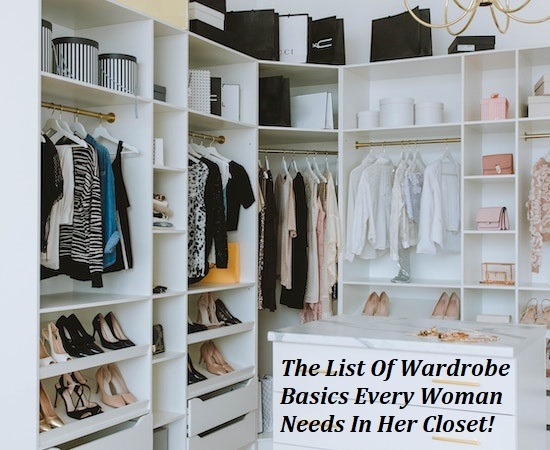Discover amazing discounts on sewing patterns-Fabric-Doll CLothes-eBooks-Yarn-& Other Handmades!
The List of Wardrobe Basics to Sew That You Need in Your Closet
Build a timeless closet with handmade wardrobe basics that fit, flatter, and mix effortlessly. This guide shows you how to sew essential pieces like blazers, skirts, tees, and more—all in classic, neutral tones perfect for everyday wear.
CLASSIC AND VINTAGE SEWING
Rhonda Harris
7/30/20254 min read
How to Always Have Something to Wear by Sewing Smarter, Not More
Do you ever stand in front of a full closet and think, "I have nothing to wear"? If you're a sewist, it might be because you've spent more time sewing trend-driven pieces and not enough time building your handmade wardrobe foundation. The truth is, we all need more wardrobe basics—versatile, mix-and-match garments that hold everything else together.
When you sew wardrobe basics, you're not just saving money. You're designing clothing that actually fits your body, flatters your shape, and lasts longer than most store-bought fast fashion. Wardrobe basics are the workhorses of your closet. They’re the first things you reach for—again and again.
Let’s talk about how to sew those basics and make your wardrobe truly wearable, every single day.
The Power of Wardrobe Basics in Neutral Colors
Most wardrobe basics are sewn in neutral shades like black, navy, gray, brown, or white. These timeless tones pair well with prints, trends, and bright accent pieces. When your handmade basics are in neutral colors, you’ll always have something to wear—and always look put together.
You don't need to spend extra on fabric or patterns if your core wardrobe includes these mix-and-match staples. Sewing them yourself allows you to invest in quality fabrics and finishes that stand the test of time.
The 80/20 Rule for Sewing Your Wardrobe
Follow the 80/20 rule: Sew 80% basics, 20% trends. Trends fade quickly, but your handmade basics will last season after season. That doesn’t mean you can’t enjoy sewing something new and trendy—it just means your wardrobe should be grounded in timeless garments that make you feel confident every day.
What Makes Wardrobe Basics Different?
Wardrobe basics should be:
Comfortable: Choose fabrics that feel good and wear well.
Durable: Use sturdy stitching, reinforce seams, and consider lining where needed.
Versatile: Each item should pair with at least three to five other pieces.
Tailored to you: Sew them to fit your body, not a store size chart.
The Wardrobe Basics to Sew
Let’s examine the key pieces you can sew to create a wardrobe that works.
1. Shapewear-Inspired Layering Pieces
Instead of purchasing shapewear, sew your foundation layers using power mesh, spandex, or cotton lycra. Look for patterns that include smoothing tank tops, slips, and high-waisted underwear that offer gentle support. You control the comfort level—and the fit.
2. Jeans
Sewing jeans might seem intimidating, but with the right pattern and denim, it becomes a satisfying project. Choose a straight-leg or bootcut style in dark-wash stretch denim. Use topstitching thread for a polished finish and test the fit with a muslin.
Sewing Tip: Petite? Try a high-rise style to elongate your legs visually.
3. Black Trousers
A pair of crisp black pants is essential. Sew a pull-on elastic waist version or opt for a tailored waistband with darts and pockets for a more structured look. Lightweight suiting fabrics or medium-weight cotton twill work well.
4. A Black Skirt
Whether you prefer a pencil skirt, straight cut, or A-line, black skirts pair beautifully with everything. Sew one in ponte knit for stretch and comfort or in a structured woven for polish.
5. The Little Black Dress (LBD)
Every sewist should make their version of the little black dress. Choose a pattern that flatters your figure—wrap styles, princess seams, or sheath silhouettes. Use crepe, ponte, or stretch sateen depending on the occasion.
6. Black Blazer
A hip-length blazer can dress up jeans or complete a professional look. Sew it in wool, twill, or suiting fabric. Look for patterns with princess seams or darts to tailor it to your shape.
Sewing Tip: Line your blazer for longevity and comfort.
7. Black Sweater or Knit Cardigan
Sew a basic black pullover or cardigan using sweater knit, rib knit, or interlock. These layers will see constant wear and add warmth and dimension to your outfits.
8. White Button-Down Shirt
Use a crisp white cotton or cotton blend fabric to sew a timeless button-up shirt. Add your own details—topstitching, contrasting cuffs, or custom buttons—to make it yours.
Sewing Tip: Look for “no iron” shirting fabric to save time later!
9. Basic Tees and Camis
Black and white t-shirts and camisoles are layering staples. Sew them in cotton jersey, bamboo knit, or modal. Choose patterns with optional necklines and sleeve lengths for versatility.
10. A Trench Coat
Sew a lightweight trench coat with classic details like a tie belt, lapels, and back vent. Choose water-resistant fabric or cotton twill for all-season wear.
11. Leather or Faux Leather Jacket
A short jacket adds edge to dresses, jeans, and skirts. Use faux leather or suede and a cropped jacket pattern with topstitched seams for a high-end look.
12. Everyday Tote or Purse
Sew a sturdy purse or tote in canvas, denim, or faux leather. Add zip pockets and compartments to keep it functional and stylish.
13. Evening Bag
Sew an evening clutch or wristlet in black satin, velvet, or sequined fabric. Use a magnetic snap or metal clasp for a polished finish.
14. Bootcut or Flared Pants
Expand your basics by sewing a pair of pants with a slight flare. Use ponte knit or soft suiting for comfort and style. Pair with heels or booties to elongate your legs.
15. Cold Weather Accessories
Use fleece or wool to sew:
Rain boot liners
Beanies or hats
Glove sets
Boot cuffs
Sewing Tip: These make excellent scrap-busters and gifts!
16. Jewelry and Accessories
Make your own fabric earrings, faux leather bracelets, and scarf ties to complement your wardrobe basics. You can match them perfectly to what you’ve sewn!
Sew Smarter, Wear More
Wardrobe basics are not just a fashion principle—they're a sewing strategy. When you sew the right garments in the right fabrics and colors, you create a mix-and-match closet that works harder and lasts longer. Sewing your wardrobe basics is empowering, budget-friendly, and custom-fitted to your life.
Start with one or two pieces on this list, then build from there. You’ll be amazed at how much more wearable your wardrobe becomes—because you made it yourself.
Ready to Sew Your Own Wardrobe Basics?
Subscribe in the footer below for sewing inspiration, tips, and exclusive updates! Don’t forget to visit The Needle Market Shop to browse sewing patterns designed to help you create timeless wardrobe essentials—beautifully made by you, for you.


Curated Sewing Goods Online – Based in the USA
Your source for sewing inspiration: patterns, fabrics, notions, sewing eBooks, and handmade goods
Reach Out Contact Me
rhonda@theneedlemarket.com
Proudly powered by Hostinger
Start your own site with Hostinger



